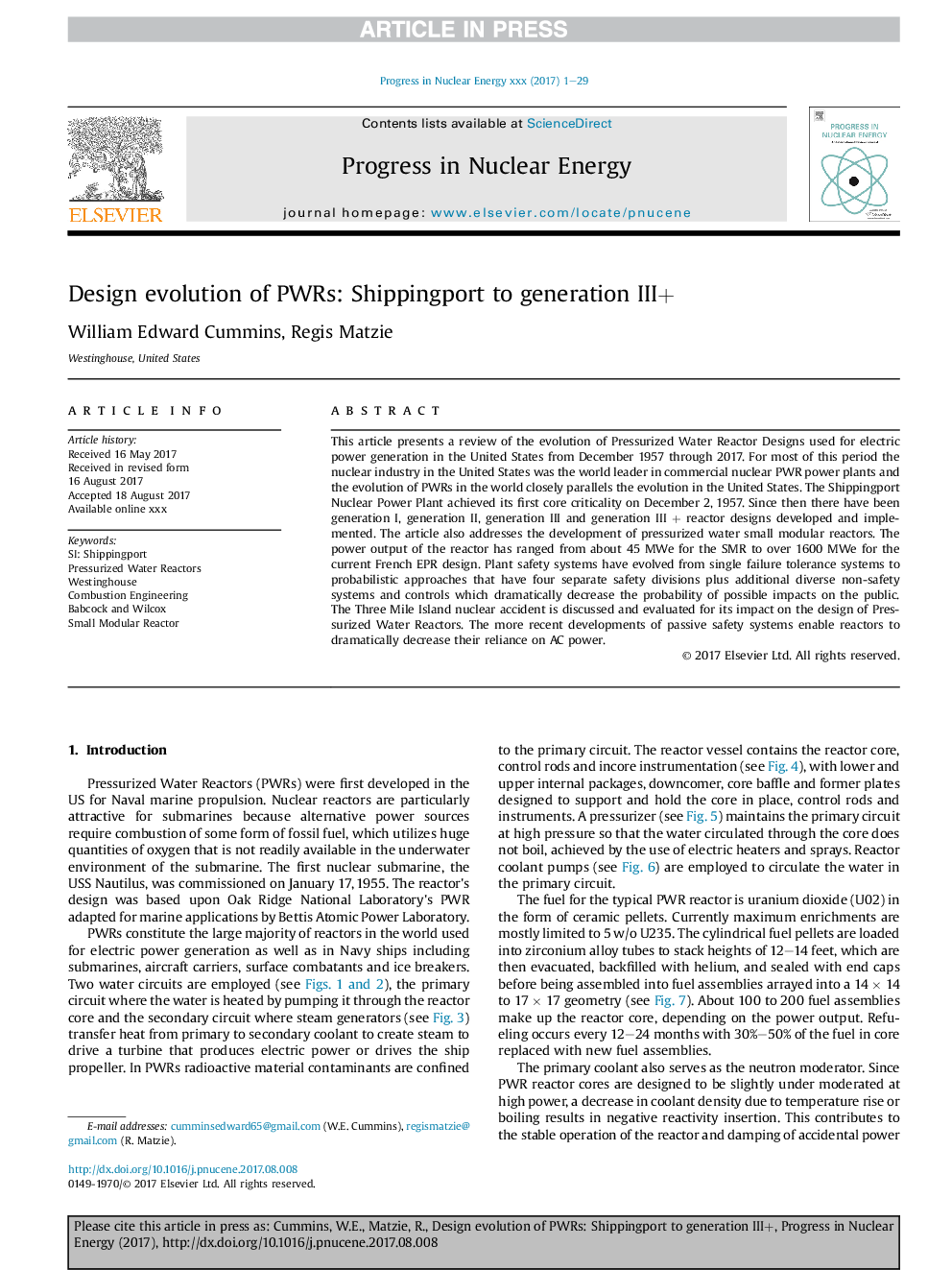| Article ID | Journal | Published Year | Pages | File Type |
|---|---|---|---|---|
| 8084548 | Progress in Nuclear Energy | 2018 | 29 Pages |
Abstract
This article presents a review of the evolution of Pressurized Water Reactor Designs used for electric power generation in the United States from December 1957 through 2017. For most of this period the nuclear industry in the United States was the world leader in commercial nuclear PWR power plants and the evolution of PWRs in the world closely parallels the evolution in the United States. The Shippingport Nuclear Power Plant achieved its first core criticality on December 2, 1957. Since then there have been generation I, generation II, generation III and generation IIIÂ +Â reactor designs developed and implemented. The article also addresses the development of pressurized water small modular reactors. The power output of the reactor has ranged from about 45 MWe for the SMR to over 1600 MWe for the current French EPR design. Plant safety systems have evolved from single failure tolerance systems to probabilistic approaches that have four separate safety divisions plus additional diverse non-safety systems and controls which dramatically decrease the probability of possible impacts on the public. The Three Mile Island nuclear accident is discussed and evaluated for its impact on the design of Pressurized Water Reactors. The more recent developments of passive safety systems enable reactors to dramatically decrease their reliance on AC power.
Related Topics
Physical Sciences and Engineering
Energy
Energy Engineering and Power Technology
Authors
William Edward Cummins, Regis Matzie,
